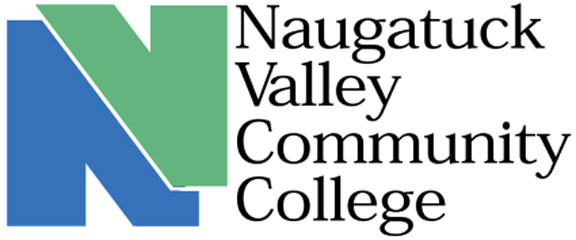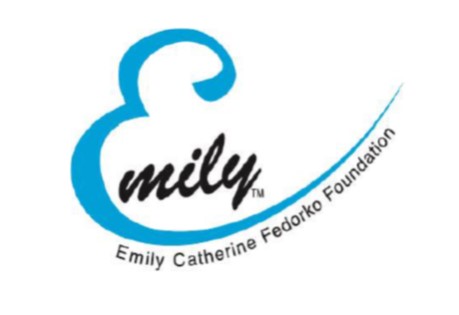Hispanics More Optimistic About Affordability and Impact of Higher Education, As Student Numbers Increase
/While the majority of Americans (61 percent) believe higher education is available to anyone in the U.S. who needs it, Hispanics are more optimistic (73 percent) than whites (58 percent) that education is available to all. Data from the Gallup organization’s national poll on the impact and affordability of higher education indicate that Hispanics tend to have a much stronger belief that higher education is attainable and impactful on one’s career and life prospects. Data released this year indicates that:
Data released this year indicates that:
- 72 percent of Hispanics say it is very important to increase the proportion of Americans with a degree or professional certificate, compared with 56 percent of whites.
- 78 percent of Hispanics, 74 percent of African- Americans, and 67 percent of whites say a postsecondary degree will be more important in the future to get a good job.
- 84 percent of Hispanics and 76 percent of African-Americans agree or strongly agree that having a professional certificate or degree beyond high school is essential for getting a good job. By comparison, 64 percent of whites agree.
- 86 percent of Hispanics agree or strongly agree that a good job is essential to having a higher quality of life. Seventy- six percent of whites agree.
- 83 percent of Hispanics and 80 percent of African-Americans agree or strongly agree that having a college degree or professional certificate leads to a better quality of life. By comparison, 71 percent of whites agree.
Although a majority of all Americans view these educational opportunities as available, only a small percentage are of the view that it is affordable to those who need it. More than three-quarters (79%) of American adults do not think that education beyond high school is affordable for everyone, while just over one in five (21%) believe it is. Fifty-one percent of Hispanics say higher education is affordable, more than twice as high as the 17 percent of whites and 19 percent of blacks who hold that opinion.
 Survey analysts indicate that the greater optimism among Hispanics may reflect their increase as a portion of the student body in postsecondary institutions in recent years. Almost all of those surveyed believed that U.S. high school students need to go to college or technical school in order to be successful in today's economy.
Survey analysts indicate that the greater optimism among Hispanics may reflect their increase as a portion of the student body in postsecondary institutions in recent years. Almost all of those surveyed believed that U.S. high school students need to go to college or technical school in order to be successful in today's economy.
More young Hispanics are choosing to attend college than ever before. Between 1976 and 2011, the percentage of Hispanic college students rose from 4 to 14 percent, according to National Center for Education Statistics data. The U.S. Department of Education projects that the percentage of Hispanics enrolled in postsecondary programs will increase by 46 percent between 2009 and 2020, according to published reports. In 2012, seven out of 10 Latino high school graduates enrolled in college, according to the Pew Research Center -- a figure that's higher than black or white students.
According to a report issued by the National Center for Public Policy and Higher Education, students from underrepresented racial or ethnic groups are more likely to enroll in community colleges as their first postsecondary institution. Nationally, 50 percent of Hispanic students start at a community college, along with 31 percent of African American students. In comparison, 28 percent of white students begin at community colleges.
Last month, Naugatuck Valley Community College (NVCC) was designated as an “eligible institution” under federal law – a distinction that allows the college to pursue grants under the Hispanic-Serving Institutions Program to expand educational opportunities for Hispanic students. Hispanic student enrollment at NVCC has increased 36 percent over the last five academic years. For the 2014-15 year, 1,790 students—a quarter of total enrollment—self-identified as Hispanic.
The Eligible Institution designation enables the College to apply for grants to fund a variety of educational materials and endeavors including scientific or laboratory equipment for teaching; construction or renovation of instructional facilities; faculty development; academic tutoring or counseling programs; funds and administrative management; joint use of facilities; endowment funds; distance learning academic instruction; teacher education; and student support services, according to the college. Capital Community College in Hartford has also earned the designation.
Among low-income students from underrepresented racial and ethnic groups, half begin at community colleges—more than double the rate of their peers from high-income families, the report points out, noting that there is almost no difference in the proportion of these students who want to go on to complete college compared to their peers. The report warns that “tuition increases that outpace family income, particularly at community colleges and regional state colleges and universities, discourage enrollment, transfer, full-time enrollment, and degree completion.”
Earlier this year, the CEO and President of the Lumina Foundation, Jamie Merisotis, expressed concern about what he described as “persistent and widening degree attainment gaps linked to race and ethnicity.” He pointed out that “projections by the Georgetown Center on Education and the Workforce show that more than 65 percent of U.S. jobs will require some form of postsecondary education by the end of this decade.” And yet, he indicated that Lumina data on postsecondary attainment rates across America, show that “only 40 percent of working-age adults (ages 25-64) now hold at least a two-year degree.”
Asian adults lead all races with 60.0 percent degree attainment; whites follow at 44.5 percent; African Americans rank a distant third at 28.1 percent; Native Americans are at 23.9 percent, and Hispanics rank fifth at 20.3 percent, Merisotis, a Connecticut native who has testified on higher education issues before Congress and the Connecticut General Assembly, pointed out.
The Gallup survey also found that 36 percent of Americans overall agree or strongly agree that college graduates in this country are well prepared for success in the workplace. Hispanics and African- Americans are more optimistic, 55 percent and 53 percent respectively, agreeing or strongly agreeing that graduates are well prepared, compared to 30 percent of whites.
Results for this Gallup-Lumina Foundation Poll, released this spring, are based on telephone interviews conducted Nov. 3-Dec. 18, 2014, with a random sample of 1,533 adults, age 18 and older, living in all 50 U.S. states and the District of Columbia. Gallup conducted surveys in English and Spanish.




 Later this month, Bike Walk CT is offering the League of American Bicyclist-designed Traffic Skills 101 program, a comprehensive day long course to give cyclists the skills, knowledge and confidence to handle on-road cycling.
Later this month, Bike Walk CT is offering the League of American Bicyclist-designed Traffic Skills 101 program, a comprehensive day long course to give cyclists the skills, knowledge and confidence to handle on-road cycling.

 ws recently
ws recently 









 Fixed route transportation operates along a prescribed route and on a fixed schedule, and includes buses and light rail. In 2014 in Connecticut, buses provided over 43 million passenger trips and rail provided over 39 million passenger trips. Demand-responsive transportation provides routes and scheduling more individually tailored to the needs of the user. The Americans with Disabilities Act (ADA) requires transit agencies to provide paratransit service, subject to certain parameters, to people with disabilities who cannot use the fixed route services. Paratransit ridership in Connecticut in fiscal year 2014 under the ADA totaled over one million rides, and dial-a-ride ridership neared 100,000 rides.
Fixed route transportation operates along a prescribed route and on a fixed schedule, and includes buses and light rail. In 2014 in Connecticut, buses provided over 43 million passenger trips and rail provided over 39 million passenger trips. Demand-responsive transportation provides routes and scheduling more individually tailored to the needs of the user. The Americans with Disabilities Act (ADA) requires transit agencies to provide paratransit service, subject to certain parameters, to people with disabilities who cannot use the fixed route services. Paratransit ridership in Connecticut in fiscal year 2014 under the ADA totaled over one million rides, and dial-a-ride ridership neared 100,000 rides. ommunities are located within a reasonable distance of quality, dependable public transportation.” In addition, policy makers were urged to “identify funding streams to sustain, coordinate, grow and make more convenient both fixed route and demand-responsive transportation options (including providing door-to-door service), and provide technical assistance to support regionalization efforts.”
ommunities are located within a reasonable distance of quality, dependable public transportation.” In addition, policy makers were urged to “identify funding streams to sustain, coordinate, grow and make more convenient both fixed route and demand-responsive transportation options (including providing door-to-door service), and provide technical assistance to support regionalization efforts.”



 At the Law and Government Academy of Hartford Public High School, one class used Serial as the basis for a semester’s curriculum. Over the course of five months, students examined the issues in each episode of the 12-episode podcast and were asked to choose a side – such as defense counsel, prosecutor, or witness – and then advocate for their position. For their final exam, students wrote appellate court briefs and argued their cases.
At the Law and Government Academy of Hartford Public High School, one class used Serial as the basis for a semester’s curriculum. Over the course of five months, students examined the issues in each episode of the 12-episode podcast and were asked to choose a side – such as defense counsel, prosecutor, or witness – and then advocate for their position. For their final exam, students wrote appellate court briefs and argued their cases. “It’s use of new media and compelling storytelling has opened up many new opportunities for students, educators, and the intellectually curious to reexamine aspects of our legal system,” said CT Forum Executive Director Doris Sugarman. “We’re thrilled to see what is sparked when our community connects to the expression of big ideas that The Forum brings to Connecticut audiences.”
“It’s use of new media and compelling storytelling has opened up many new opportunities for students, educators, and the intellectually curious to reexamine aspects of our legal system,” said CT Forum Executive Director Doris Sugarman. “We’re thrilled to see what is sparked when our community connects to the expression of big ideas that The Forum brings to Connecticut audiences.”





 “We are equally fortunate in bringing Daniel Mackay to the Trust. Dan has tremendous experience, vision and a passion for historic preservation. We also know that he will nurture the relationships of the Trust with the Governor's office, our legislature and the other organizations we partner with. We are very excited for a bright future led by Daniel.”
“We are equally fortunate in bringing Daniel Mackay to the Trust. Dan has tremendous experience, vision and a passion for historic preservation. We also know that he will nurture the relationships of the Trust with the Governor's office, our legislature and the other organizations we partner with. We are very excited for a bright future led by Daniel.”




























